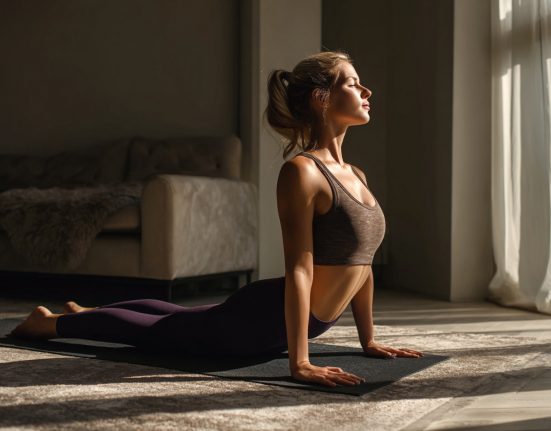In the midst of the stress of contemporary life, walking is an easy yet efficient way to improve our physical and mental health.
Walking is a simple activity that can be done anywhere and doesn’t require any additional equipment.
You may release an abundance of advantages by developing a successful walking schedule, including improved cardiovascular health, increased mood, weight control and less stress.
It is more important than ever to adopt walking as a daily practice in a time when sedentary behaviors and health issues are prevalent.
Let’s look at eight key ideas to help you create a customized walking strategy that will enable you to get closer to a healthier and more contented existence.
How to assess your current fitness level?
The first and most important step in developing an effective and unique walking strategy is to evaluate your current level of fitness.
You may create achievable goals thanks to this assessment, which also helps you understand the possibilities and limitations of your body.
Understanding your current level of fitness can help you create a walking program that meets your specific demands and enhances your general wellbeing.
Health history review
Reviewing your medical history will help you find any previous injuries, surgeries or diseases that may have affected your capacity for physical activity.
Knowing your medical history can help you decide on the level of difficulty and the best forms of activities for you.
For instance, you can think about low-impact workouts like walking on softer ground or donning supportive shoes if you have a history of knee problems.
Consulting medical professionals
Before beginning a walking program, it is advisable to see a healthcare practitioner or trained fitness expert if you have any current health issues or have been inactive for a long time.
They may carry out a full evaluation and offer you individualized advice depending on your health situation and specific requirements.
If you have underlying medical illnesses like heart disease, diabetes or respiratory problems, this visit is very crucial.
Defining objectives
Clearly state your goals for fitness and what you hope to accomplish with your walking schedule.
Setting quantifiable goals can help you stay motivated and concentrated.
Your goals may be to lose weight, increase general stamina, reduce stress, improve cardiovascular endurance or just improve your quality of life.
Measuring physical fitness
It will be easier to monitor your development over time if you take baseline assessments of your physical fitness.
Take note of your resting heart rate, or how many times per minute your heart beats when you are at rest.
Better cardiovascular fitness is typically indicated by a lower resting heart rate.
Measure your blood pressure as well to make sure it is within a healthy level.
Endurance testing
You may measure your cardiovascular stamina by going for a quick walk. While walking a set distance, such as a mile, choose a comfortable pace and keep track of the time.
Keep track of the length of the walk and your post-walk feelings. You may learn a lot about your current stamina and aerobic ability from this.
Flexibility and strength assessment
Perform some simple exercises to assess your muscle strength and flexibility. Test your flexibility by sitting with your legs outstretched and reaching as far forward as you can.
To enhance your physical strength, try doing bodyweight exercises such as push-ups, planks, squats, and lunges. Keep track of the number of repetitions you can complete easily and any problems you run into.
Subjective assessment
Pay close attention to any physical discomfort or exhaustion you feel while doing daily tasks. As you move, pay attention to your body’s messages and any discomfort or strange feelings.
It’s crucial to comprehend how your body reacts to physical effort if you want to avoid overworking yourself and suffering injuries.
What are the 8 essential tips for creating an effective walking plan?
Making a walking strategy that works is a step toward better health and well-being.
You may create an effective and long-lasting walking program by taking the time to carefully consider these eight key tips.
Assess your current fitness level
Your body’s potential and limits can be better understood by assessing your present level of fitness.
This evaluation entails looking through your medical history, including any previous illnesses or injuries that could have an impact on how often you walk.
If you want individualized advice and assurance that the walking program you choose is secure and appropriate for your health situation, consult with a healthcare professional like a doctor or a certified fitness specialist.
In order to understand where you are starting from and create goals that are achievable, you need also evaluate your strength, flexibility and endurance.
Set realistic goals
Any walking plan’s success depends on establishing targets that are both specific and attainable.
Make your goals Specific, Measurable, Achievable, Relevant and Time-bound by using the SMART criteria.
Start with modest, attainable goals that are compatible with your present level of fitness.
If you are just starting to walk, for instance, set a goal of walking for 20 to 30 minutes three times a week, and as your stamina improves, progressively increase the time or frequency.
Make your goals specific to your needs and commitments, accounting for time commitments and probable rest days.
Choose the right walking style
There are many different walking techniques to try, and each has its own advantages.
Power walking utilizes arm motions to stimulate the upper body while maintaining a rapid pace.
Nordic walking works out the entire body by using poles to engage the muscles in the upper body.
Try out many techniques and pick the one that best suits your fitness level, tastes, and objectives.
Changing up your walking technique may also spice up and offer variation to your routine.
Structure your walking frequency and duration
Consistency is essential for getting the most advantages from walking.
Make a schedule for your weekly walking sessions, including how long they will last.
Aim for 75 minutes of strenuous walking or at least 150 minutes of moderate walking each week, spread out across many days.
It might be just as useful to break up your walking sessions into shorter intervals throughout the day, such as 10-15 minutes.
Incorporate strength and flexibility exercises
Add strength training workouts to your walking routine to focus on various muscle groups.
Your walking efficiency, stability and general body performance are all improved by muscular strength.
Include mobility and flexibility exercises as well to increase your range of motion and lower your chance of injury.
Before and after your walks, stretch the key muscle groups, including the hamstrings, quadriceps and calves, to increase flexibility and help avoid muscular stiffness.
Fuel your body with balanced nutrition
An essential part of sustaining your walking practice and general health is proper diet.
Eat a varied diet that is balanced and contains lean proteins, healthy fats, fruits, vegetables, whole grains and various grains.
Give nutrient-dense meals top priority to fuel your walks and help your muscles recuperate.
To maintain a steady energy level during and after your walks, include nutritious snacks.
Stay hydrated during walks
For the best walking performance and general health, hydration is crucial.
On hot or humid days in particular, make sure to drink water before, during and after your walks.
Bring a bottle of water with you to make sure you drink enough water as you walk.
Be aware of your fluid intake since dehydration can cause decreased performance, weariness and even diseases connected to the heat.
Listen to your body and prevent injuries
During your walks, pay special attention to the messages coming from your body.
Slow down or stop if you feel any pain, discomfort or overexertion symptoms.
You may assist your muscles and joints get ready for the physical demands of walking by using prehabilitation strategies like dynamic warm-ups and adequate stretching.
Additionally, you may avoid injuries and have a better walking experience by adopting the ideal walking posture and using the right shoes.
How to build consistency in your walking routine?
Establishing an organized and long-lasting strategy to integrate walking into your everyday life is key to developing consistency in your walking practice.
Here are some useful tips to support you in continuing your regular walking habit:
Set a walking schedule
Consider your everyday strolls as meetings with yourself. Set aside particular periods or days of the week for walking. Stick as closely as you can to your timetable since consistency is important.
Start small and gradually increase
If you’re new to walking or trying to build a consistent routine, start with manageable goals. Start with quick walks that you can easily fit into your day, and as you get more accustomed to them, gradually increase the length or frequency.
Be realistic
Establish achievable goals that fit well with your lifestyle and commitments. Aim for shorter, more frequent walks if your calendar is full. Making walking a viable and sustainable part of your daily routine is the goal.
Find a walking buddy
Invite someone along with you when you go for walks, a friend, relative or colleague. Along with providing company, a walking partner increases accountability. Walking will be more pleasurable if you encourage one another and share the experience.
Create walking rituals
To make your walks feel more gratifying and pleasurable, create routines around them. Take a minute to enjoy nature while you walk, listen to your favorite music or podcasts while you do so, or reward yourself with a nutritious snack afterward.
Set walking goals
For your walks to remain exciting and worthwhile, maintain setting relevant, attainable goals. To keep motivated, celebrate your accomplishments, whether they include covering a specific distance or walking every day for a week.
Conclusion
Making a walking plan that works is a revolutionary path to better health and well-being.
You may unlock the many advantages of this simple yet effective activity by evaluating your current level of fitness, establishing achievable goals and adding walking into your daily schedule.
Accept the reliability, fun and benefits of walking, as each step you take will bring you one step closer to a healthier and more satisfying existence.
So put on your walking shoes, take that first step, and watch as the road to a better you unfolds with each step.
FAQs
What are the tips for effective walking?
The best ways to walk effectively are to set achievable goals, evaluate your level of fitness, select the appropriate walking technique, incorporate strength and flexibility workouts, remain hydrated, and make walking a regular part of your daily routine. To maximize the advantages of walking, it’s also crucial to pay attention to your body, keep track of your progress, and make sure you stay safe when out walking.
Can walking help with weight loss?
When paired with a healthy diet and a regular exercise schedule, walking can indeed help you lose weight. Walking is a low-impact aerobic activity that promotes metabolism, burns calories, and helps create a calorie deficit—which is necessary for weight reduction.
What is the ideal walking pace for beginners?
An appropriate walking speed for newcomers is normally between 2.5 and 3 miles per hour (4 and 5 kilometers per hour). Most people can talk while walking at this pace since it is comfortable for them, signifying a moderately strenuous effort. Beginners can progressively raise their walking speed as their fitness levels rise to meet their capabilities and goals.









